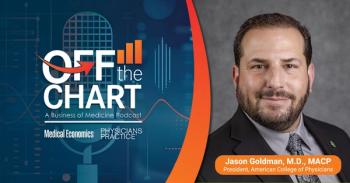
Social Media Leads the Way in Patient Engagement
Practices can interact with patients in many ways using social media: from community engagement to patient education to crisis communications.
Before a patient even walks in the door, he's already generated a first impression of his physician and practice based on what he's found online.
"Our patients have formed an impression before they've met us [in person],"said Nick Van Terheyden, the chief medical informatics officer for Nuance Communications during the
To make sure that first impression is a good one it helps for physicians and practices to have an active presence on social media platforms such as Twitter, Facebook, and LinkedIn, he said.
Terheyden, who tweets under the handle
"This is happening, and if you aren't accessing it you are missing an opportunity to interact," Terheyden cautioned.
For example, he noted that one of the things that patients may find when they search for a physician's name are patient reviews on physician review sites. These sites offer the opportunity for physicians to post a profile picture and may offer an opportunity to respond to reviews. He suggested that physicians be aware of the reviews they are receiving online and to post photos and other information on such sites to create a positive impression.
Many businesses and organizations, including Dell, actively monitor social media for mentions and complaints about their company and products. This monitoring gives them an opportunity to quickly respond and provide a better impression of their service, Terheyden explained.
Hospitals and practices are also getting in on the act with their own social media patient outreach. Terheyden highlighted several ways healthcare organizations can use social media to enhance patient engagement, including community engagement, real-time patient education, outreach to referring physicians, customer service, and crisis communications.
"It's not going away," he said.
It can be intimidating for physicians and practices to dip a toe in social media, Terheyden acknowledged. But he suggested they start slow by setting up accounts and following what other practices and health organizations are doing on social media. He suggested that physicians follow colleagues and others they know in the industry. One way to follow conversations on Twitter is by following hashtags (#). For example, typing in #HIMSS15 allows Twitter users to view tweets relevant to the HIMSS meeting.
Practices should establish policies for social media use and train staff to avoid inappropriate posts or posts that could violate patient privacy, he said. For example, the Mayo Clinic
• Don't lie
• Don't pry
• Don't cheat
• Can't delete
• Don't steal
• Don't reveal
Ultimately, Terheyden said that interacting with patients is really the key to successful social media use and it can be a powerful tool for patient engagement.
"It's about collaborating, interacting, engaging, and learning from our patients," he said.
Newsletter
Optimize your practice with the Physicians Practice newsletter, offering management pearls, leadership tips, and business strategies tailored for practice administrators and physicians of any specialty.









